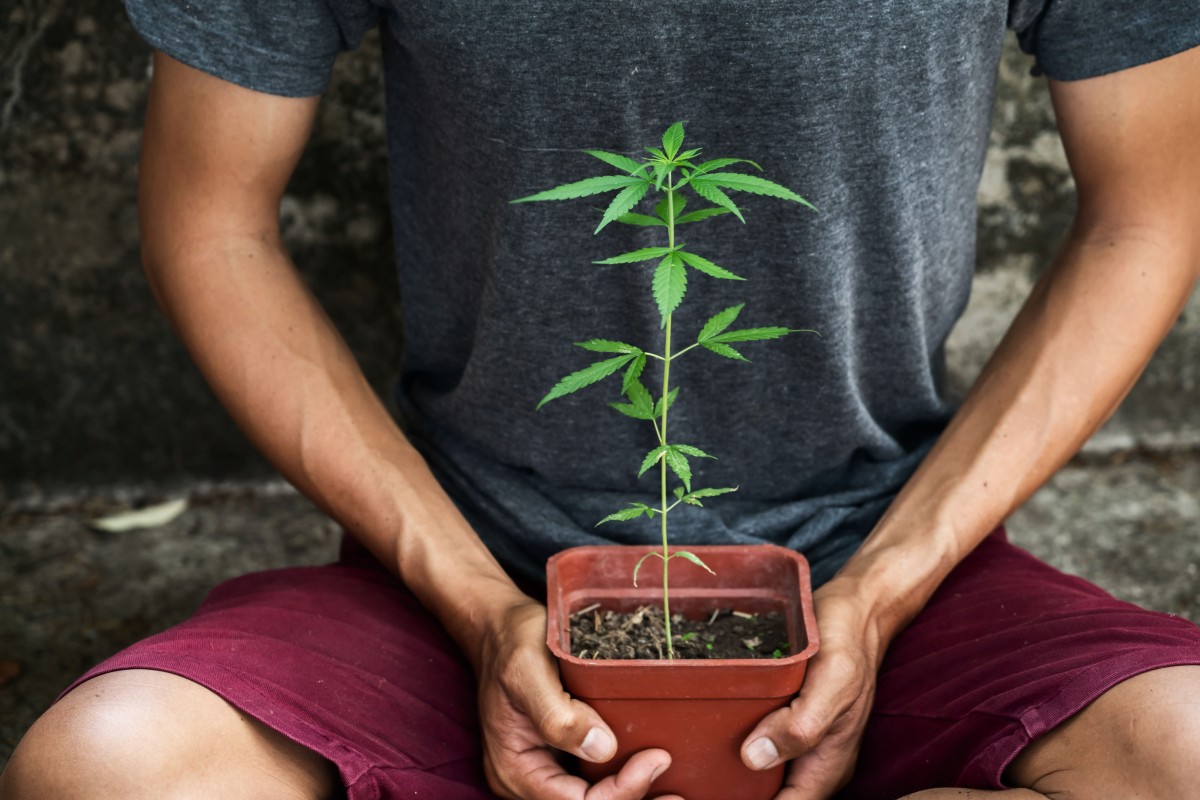Topping a marijuana plant is a skill you need to master to give new growth room and broaden the plant’s canopy. It is one of the most commonly used training techniques that have proved to increase yields immensely.
However, topping is a high-stress training method. It gives a lot of pain to the plant because you’re cutting the main shoot off so that it splits into multiple growth.
The pressure it heaves on the plant means that the plant must be able to take the punch, lest the growth might stagnate and further inhibit your growing progress.
Can You Top A Plant Too Early?
The cannabis plants need to develop a stronger, robust root system before you top them. If you top the plants when they have less than 4 node s, they will stunt in growth and may take weeks to resume. Let the plant grow to up to at least four nodes, then top at the 2nd node.
The roots should be well-developed before you top to nourish the plant for new growth.
The marijuana plants need to grow to a level before they can withstand the stress of topping.
The best time to start topping is when the plant has grown 6 nodes. Then you cut it at the 3rd node. At this height, the roots are deep enough, and the plant can withstand the stress of topping.
Most growers make the mistake of topping the plants before the root system has taken hold.
Without enough nutrients reaching the plant, the above-ground growth might even stop as the plant attempts to grow the roots first.
On the other hand, if you top the plant when it’s in perfect root health, it barely suffers the stress of topping.
The nutrients reach the growth tips, the cut heals faster, and the plant picks up new growth without much stalling.
Risks of Topping Too Early
When you top too early, you won’t see the benefits of the technique. Here are some of the problems you’ll be grappling with;
- Stunted Growth
Stunted growth appears here for obvious reasons. It can threaten the life of your plant and get you making more knee-jerk decisions that further hurt the plant.
Some plants never pick up growth after the initial topping. The plant might look green and healthy but just won’t grow. It will take weeks before they resume growing.
2. Low Yield
When you top the plant too early before it’s strong enough to withstand the stress of topping, it might take several weeks to pick up growth. The plant may have little time left to fatten the buds if you stick to the timeline.
3. The Plant May Turn Hermie
Depending on genetics, stress can sometimes induce the worst reaction in cannabis plants. For example, some strains will turn hermaphrodites with prolonged stress of topping before the root system is sufficiently developed.
Healthy plants rarely become hermaphrodites after topping. But when you combine topping too early and sub-par grow conditions, the plant might develop hermaphrodite traits.
The plants turning hermaphrodites is majorly a worry during the flowering phase. But subjecting the plant to topping stress earlier sets the stage for far worse defense mechanism reaction with subsequent toppings.
If a female cannabis plant goes through stress that threatens its natural reproduction cycle, it will respond by producing male pollen sacs to pollinate itself.
If you fail to catch them early enough, the hermies can pollinate all your plants, and boy, that’s a huge loss!
4. The Cuts Expose the Plant to Pathogens
When you top a healthy plant at the right time, it heals faster. However, when the plant’s wounds take too long to seal up, the plant becomes prone to bugs that draw sap from the cuts.
The wound the plant gets after topping makes a potential entry point for pathogens that can now bypass the defense of the outer plant’s shell.
The risk of bugs and pathogen attack increase with the length of healing. The longer the wound remains open, the more vulnerable your plant becomes.
Does Topping Increase Yields in Cannabis?
Topping encourages horizontal growth that leaves the whole plant exposed to the light, thus more yield. Topping also sends stress signals to the plant’s defenses, inducing more growth and more bud sites. Therefore, a bigger yield.
Topping allows the rest of the plant’s branches to receive intense light instead of just a few branches on top.

Can You Top A Cannabis Plant Multiple Times?
You can top your plant multiple times. After the initial topping, the plant will branch from one main shoot to more side branches. These side branches will continue to grow, and you can top them to increase their exposure to the light in the grow tent.
Topping is, however, a high-stress training technique, and you should give your plant enough time to heal before you top them the second time.
Topping also means your plant will take longer in the vegetative state as it needs to heal and give time for the new shoots to grow. When you top multiple times, your plant takes longer to mature.
Every time you top, you increase the vegging time. Thus your growing project will take longer than you were prepared for— think nutrients and timelines!
Can I Top Right Before Flowering?
Topping cannabis just before flowering is a risky move, but when done right can reward you considerably. You can top your plants up to one week into flowering as the plant has the stretch phase for healing and extra growth. By the end of the stretch phase, the plant will form a thick canopy below the grow lights.
Topping before flowering can be a great way to control the height of the plants as you enter the flowering phase.
The biggest problem you face is stressing your plants too much when they’re at their most vulnerable. At the flowering phase, you risk making your ladies hermies. So check how susceptible the strain is to becoming hermaphrodites before topping them.
The first three weeks of flowering are a safe bet for most strains because the plant continues to grow. However, most growers prefer to FIM at this stage to reduce the amount of stress the plant is subjected to.
After the vegging, you should give the plant a rest so that none of its energies is used in healing the cuts and creating new growth points, but to nourish the flowers.
To play it safe, look at the plant’s health and how it reacted to prior topping procedures. But if in doubt, just stop topping in the vegetation stage.
When to Stop Topping Cannabis Plants
You should stop topping your plant one week into the flowering stage. Stop topping before the stretch so that the new shoots have time to heal and grow before flowering really starts.
Stopping in the late vegging stage is also welcome, especially for novice growers who don’t want to risk their plants through more stress.
Topping is a technique that aims to fill the canopy so that the light has all the buds exposed before it.
Thus, when to stop topping is also influenced by the space you have to fill and the number of plants in the tent.
If you’re growing one plant in a massive space, you can top for longer because you’ve got more room for the plant to stretch outward.
On the other hand, if you have more plants and little space, you should stop topping earlier since the plants don’t have enough room for horizontal growth.
Whatever you do, stop topping in the first week of flowering. It’s the furthest you can go without stressing the plant too much. If the stretch period gives you more shoots to deal with, it is better to tie them down with yoyos than topping them after weeks into flowering.
Tying the branches down doesn’t stress the plants, and they won’t need time to heal before they bloom.
In conclusion, you can top a plant too early and stunt its growth in the process. If you want to get the best out of the process, leave the plant to grow up to the 6th node, then top to the 3rd node. The plant shall be old enough to withstand the stress.

